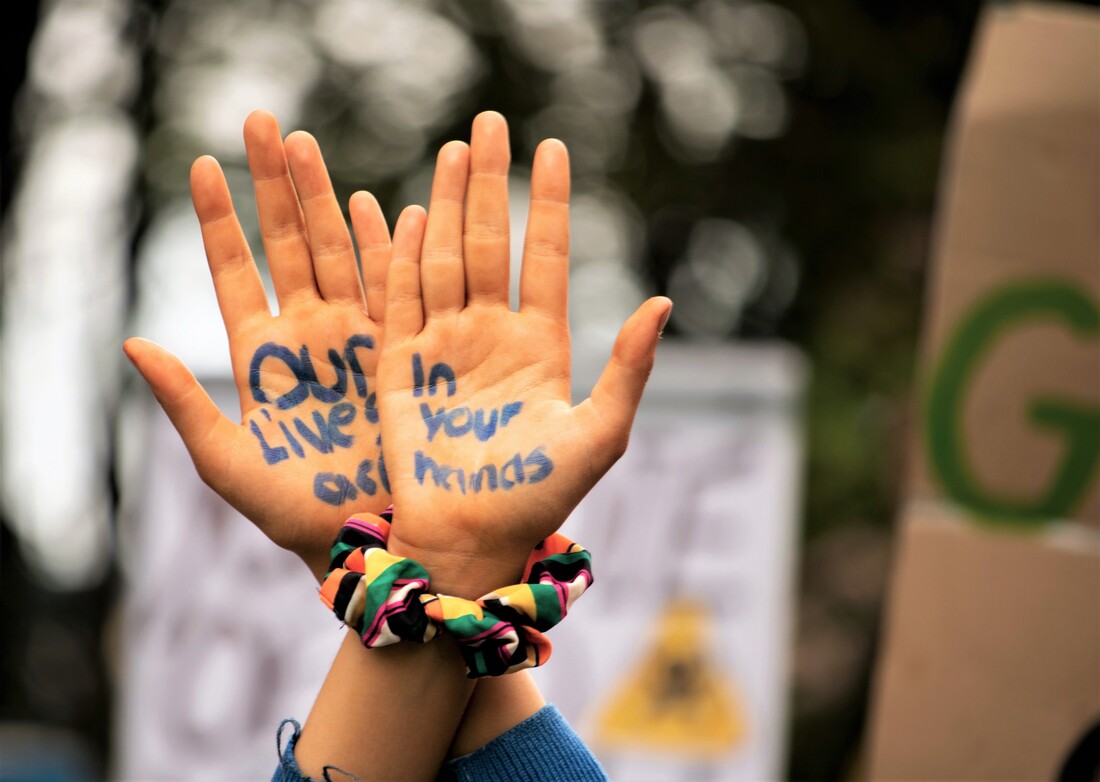|
‘Without transition, a change is just a rearrangement of the furniture.’ (William Bridges) Lean forward and look into the room. Listen in carefully to the conversation. An organisation has decided to move to smaller and cheaper office premises in order to reduce its overheads. It will mean agile working: a shift to hybrid working, hot-desking and staff lockers. It appoints a change team to oversee the move, and the team notices a range of responses from staff, from passive apathy to active dissent. It faces a growing concern about what it perceives as resistance to change. It tries hard with corporate communications to let staff know what will happen when and yet is increasingly bemused and anxious about the apparent lack of buy-in. The team invites me in as an external organisation development (OD) consultant to have a conversation with staff, an open exploration of issues and how to move things forward. Here’s a glimpse and summary, following initial rapport-building and relational-contracting to ensure a felt-sense of safety and trust in the room:
The change team had focused on practical changes (physical-transactional: what happens around us) and inadvertently failed to pay attention to corresponding human transitions (psychological-emotional: what happens within us). Notice the flow of the consultant conversation: from feeling, to meaning, to need, to solution. The style is invitational, enhancing the felt-sense of choice, influence and agency. Baskets are provided. Staff re-engage. The move goes ahead smoothly. [See also: Change leadership principles; Organisations don't exist]
10 Comments
‘Now let us begin. Now let us re-dedicate ourselves to the long and bitter, but beautiful, struggle for a new world.’ (Martin Luther King) Few songs convey the pain and potential consequences of protest like the Dixie Chicks’ (now Chicks’) ‘Not Ready to Make Nice’. Singer Natalie Mains had dared publicly to criticise the then-U.S. President, George W. Bush, during the 2003 run-up to the U.S.-led invasion of Iraq. The group was subsequently banned from being played on many U.S. radio stations and group members were subject to attacks on their character, and even to death threats. ‘Not Ready to Make Nice’ is a passionate reflection on that experience, a resounding spirit of unbroken resistance in a near-breaking voice: ‘Forgive, sounds good. Forget, I'm not sure I could. They say time heals everything, but I'm still waiting. I'm through with doubt. There's nothing left for me to figure out. I've paid a price, and I'll keep paying. I'm not ready to make nice, I'm not ready to back down. I'm still mad as hell, and I don't have time to go 'round and 'round and 'round. It's too late to make it right. I probably wouldn't if I could ‘cause I'm mad as hell. Can't bring myself to do what it is you think I should. I know you said, ‘Why can't you just get over it?’ It turned my whole world around – and I kinda like it. I made my bed, and I sleep like a baby with no regrets. And I don't mind saying it's a sad, sad story when a mother will teach her daughter that she ought to hate a perfect stranger. And how in the world can the words that I said send somebody so over the edge that they'd write me a letter saying that I better shut up and sing – or my life will be over?’ This experience reflects the spirit of an age in which we find ourselves too. Voices of dissent against a mainstream narrative are often heard with disdain, if at all, in the clamour of polarised and conflicting ideologies, opinions and rage. Platforms that could protect and promote democratic values, ranging from conventional and social media to schools and university campus’, all too often create echo chambers that reinforce the dominant view. Silence is golden. Silenced is not. When did you last speak up? What have you left unspoken that needs to be said? 'Diagnosis determines intervention.'
There’s a very big difference between ‘What’s wrong with you?’ and ‘What’s happened to you?’ Jo Watson’s book, Drop the Disorder (2019) is a timely and courageous personal-professional challenge to the creeping influence of the biomedical model into social-psychological therapeutic thinking and practice. In her aptly titled article in the book, ‘There’s an intruder in our house!’, she reflects with a pained air of near-despair on this gradual, alarming and depressing diagnostic drift: ‘It wasn’t always like this. I joined a profession that held a shared belief about the nature of human emotional distress. We understood that the many forms of human suffering we witnessed – ranging from feeling low and suicidal to self-injury, hearing voices, overwhelming anxiety and dissociative experiences – were responses and reactions to what had happened in people’s lives and, in many cases, the resourceful and creative coping strategies they had developed to survive. We clearly and consistently made links between emotional distress and causal factors like poverty, racism and abuse. There was a deep, collective ‘knowing’ that social circumstances were linked directly to human suffering and this acknowledgement translated into a connection with the political arena. Yet, as I write, this work has been consumed by a biomedical monster that has crept into our house and made itself very much at home. In fact, I don’t feel this is my home anymore.’ Jo is challenging a fundamental risk of the biomedical therapeutic model, that it locates a perceived problem in an individual, irrespective of a broader context. In doing so, Jo echoes disaster management expert Marcus Oxley’s insight (in a different arena) that, if we see a pattern of symptoms in people attending an Accident & Emergency unit, it may well reveal something implicitly about conditions in that context. It’s always about the person, but it’s rarely only about the person. ‘You are a sign of God, the proof of his living love.’ (Mother Teresa) As we walked to the local shops, the sky was foreboding grey, the ground was wet with muddy snow and the air felt freezing cold. We passed by various people on route, trudging with heavy bags and looking faintingly-tired in the fading half-light. Each time we approached someone, the petite Filipina walking beside me sprang spontaneously into a wild, animated greeting with wide open arms and a beaming smile: ‘Good evening!’, ‘Merry Christmas!!’ The strangers looked up with astonishment, surprise. Then they would smile (some laugh), greet her back and look happier and more energised. I laughed too. ‘What made you do that?!’ It feels unusual in this UK culture to speak to those we don’t know, and especially with such vibrantly-extroverted enthusiasm. She commented, ‘They looked weary and alone. I wanted to do something small to brighten their day.’ It brightened my day too. This woman shines Jesus. She models Mother Teresa’s invitation to do small things with great love. I found myself looking forward to being outside with her, to witnessing her acts of kindness and their deep, detonating impact. She made the winter dark seem lighter and the bitter cold feel warmer. When have you witnessed, experienced or done small things with great love? [See also: Seen and unseen; A radical heart; Candles] ‘I’m not a teacher, but an awakener.’ (Robert Frost) I imagine something like a coffee table between us. As the client talks about a challenge, issue or opportunity they are dealing with, I imagine them metaphorically painting a picture on the table, perhaps adding something like colourful photos from magazines, to depict their situation vividly. If, as a coach, I allow myself to follow the client’s gaze, to focus my own attention too on the scenario that is unfolding, I risk losing sight of the client. It may weaken the contact between us; draw us both into the place where the client already feels stuck; diminish the potential for transformation. How can I know if this is happening, if I have inadvertently become preoccupied with or seduced by the drama the client is presenting? Here are some tell-tale signs: ‘Tell me more about…’; ‘I’d be interested to hear more about…’; ‘Could you share a bit more of the background..?’ It could be that the client’s issue resonates with an area of interest, expertise or experience of the coach; or that the coach has subconsciously slipped into diagnostic-consultant mode, with a view to finding or creating a solution for the client. It’s as if, ‘If you give me enough information, I can resolve this for you.’ A radically different approach is to hold our attention on the client, to be aware of the figurative coffee table in our peripheral vision, but to stay firmly focused on the person (or team) in front of us. This is often where the most powerful coaching insights and outcomes emerge. Here are some sample person- (or team-) orientated questions: ‘Who or what matters most to you in this?’; ‘What outcome are you hoping for?’; ‘As you talk about this now, how are you feeling?’; ‘What assumptions are you making?’; ‘What are you not-noticing?’; ‘What are you avoiding?’; ‘Now that you know this, what will you do?’ 'God's face is turned towards us absolutely...it is we who have to learn, little by little, to return the gaze.' (Richard Rohr) |
Nick WrightI'm a psychological coach, trainer and OD consultant. Curious to discover how can I help you? Get in touch! Like what you read? Simply enter your email address below to receive regular blog updates!
|









 RSS Feed
RSS Feed